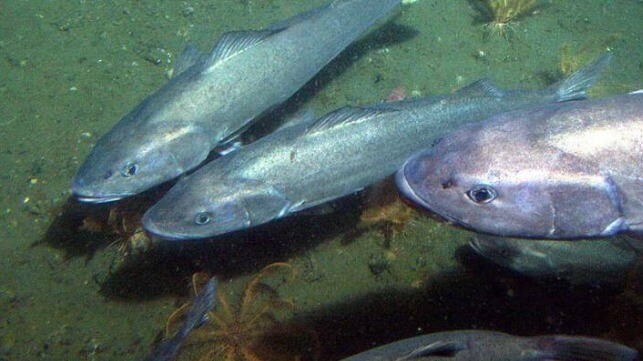West Coast Groundfish Fisheries May See Large-Scale Climate Effects

As their counterparts in Alaska have already learned, U.S. West Coast fishermen will find that climate change alters the location and composition of fish stocks as the water warms, according to NOAA Fisheries.
The changes in Alaska are already extreme. Snow crab stocks have collapsed, cod and pollock have appeared farther north, sockeye salmon stocks are soaring, and chinook and chum salmon have been hit hard.
As times go on, West Coast groundfish fisheries may also shift, according to NOAA. Recent research published in Science Advances shows that high-value sablefish may move further offshore, where the water is deeper and the transit times to and from port are longer for fishermen. According to NOAA, the shift could force fishing communities to transition their efforts to other target species, or accept higher costs to pursue sablefish.
"Availability of the most economically valuable, primary target species is highly likely to decline coastwide in response to warming and reduced oxygen concentrations," advised the authors. "Availability of the most abundant, secondary target species will potentially increase."
The study examined four commercial species of groundfish - sablefish, Dover sole, shortspine thornyhead and longspine thornyhead. Taken together, they account for about half of the bottom-trawl groundfish earnings on the Pacific Coast. The latest climate models predict that waters will warm and oxygen levels will decline off the West Coast, and this will affect the population of each species differently.
Longspine thornyhead is expected to stay in its current habitat range, but sablefish and shortspine thornyhead will likely move far offshore. As the U.S. continental shelf drops off quickly on the West Coast, this will put these groundfish species in deeper water, where they will be harder to get. If they decide to resettle below 700 fathoms, regulations would have to change to allow fishermen to trawl the bottom at greater depths.
“This may not be good news for the fisheries, but it hopefully provides some foresight into how distributions may shift and gives fisheries and managers time to consider how to adapt to these changes," said Owen Liu, a research scientist at the Northwest Fisheries Science Center in Seattle.
The changes will also affect environmental-impact and economic impact analyses for floating offshore wind projects, which are in planning stages off Northern California and Southern Oregon. The anchors of a floating wind farm will make bottom trawling impossible within the project's bounds.
"Projections of species’ future distributions will be important in the decision-making process for where these new sectors are permitted and sited to minimize future conflict," wrote the authors.
No comments:
Post a Comment